What can you do to reduce stormwater runoff?
Gardening and Rain Gardens
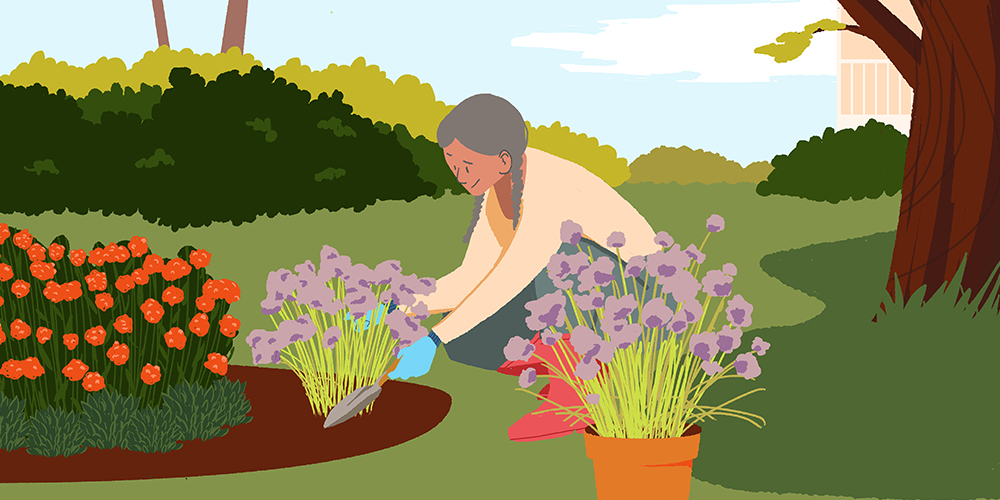
A rain garden is a specially designed landscaped area that provides natural places for rainwater to collect and soak into the ground.
A rain garden allows the rain water to pool for a short period of time in the garden. As rain from rooftop areas or paved areas soaks into the ground, the water is cleaned by the plants and the soil microbes in the soil. This water can recharge the groundwater supply and release slowly without dirt or other pollutants.
All it takes is a little planning, a shovel, some plants, and a few stones. It is easy and can be installed in a few short hours.
Rain Garden Plants
Salt-tolerant
These plants are salt-tolerant, so you can plant them need walkways, driveways or other places to get salted during the winter.
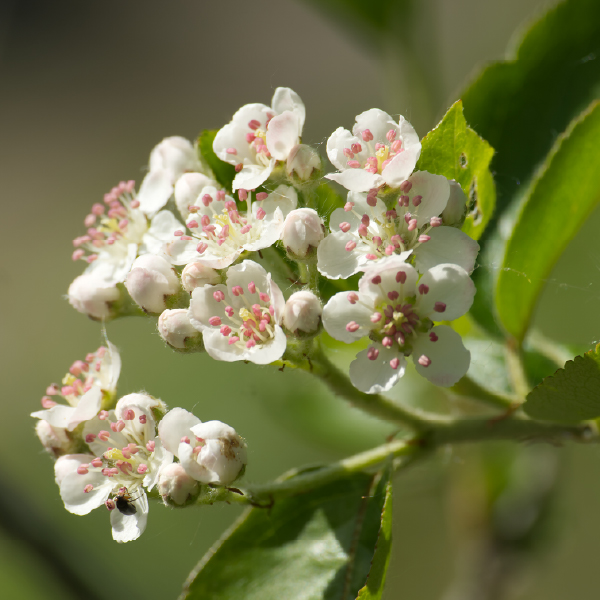
Black Chokeberry
Aronia melanocarpa
Shrub
Height: 3–5′
Exposure: Full Sun
Bloom: Spring
White to pink flowers, edible berries for jam or wine
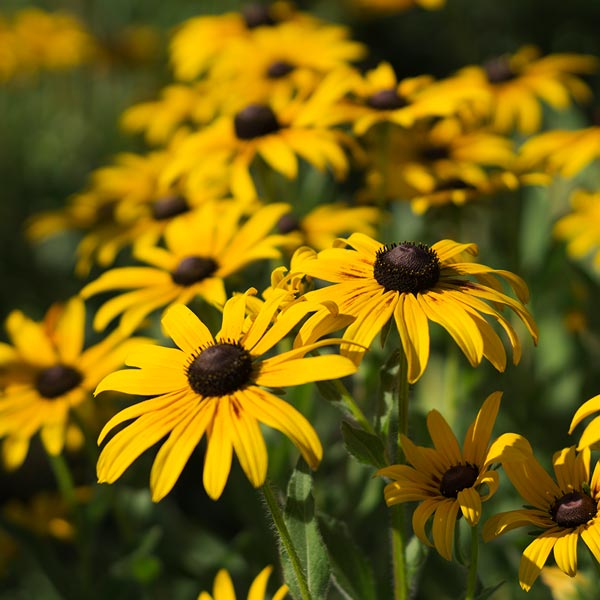
Black Eyed Susan
Rudbeckia hirta
Perennial
Height: 1′
Exposure: Full Sun/ Partial Shade
Bloom: Summer/Fall
Orange-yellow flowers, short-lived, deer resistant
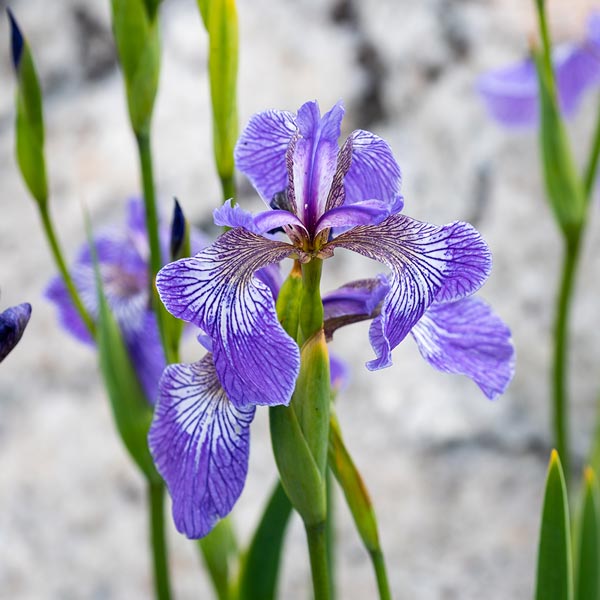
Blue Flag Iris
Iris versicolor
Perennial
Height: 2–3′
Exposure: Full Sun/ Partial Shade
Bloom: Spring/Summer
Blue-violet flowers
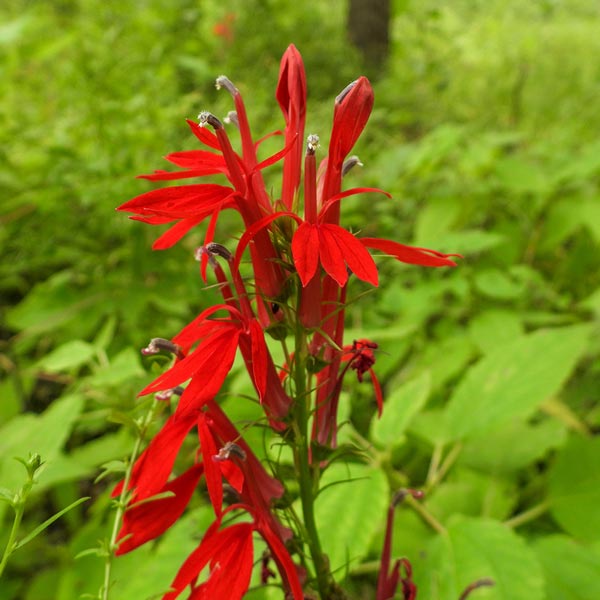
Cardinal Flower
Lobelia cardinalis
Perennial
Height: 2–4′
Exposure: Full Sun/ Partial Shade
Bloom: Summer
Vibrant red spiky flowers, tricky, short lived
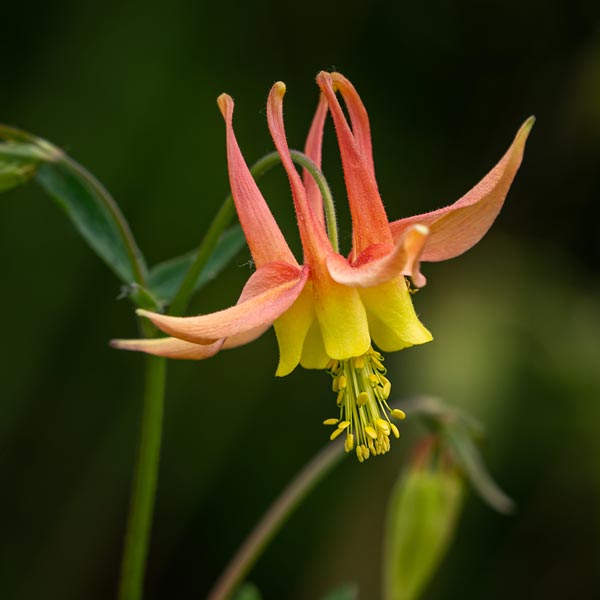
Columbine
Aquilegia canadensis
Perennial
Height: 1-2′
Exposure: Full Sun/ Partial Shade
Bloom: Spring/Fall
Showy red and yellow, beautiful foliage
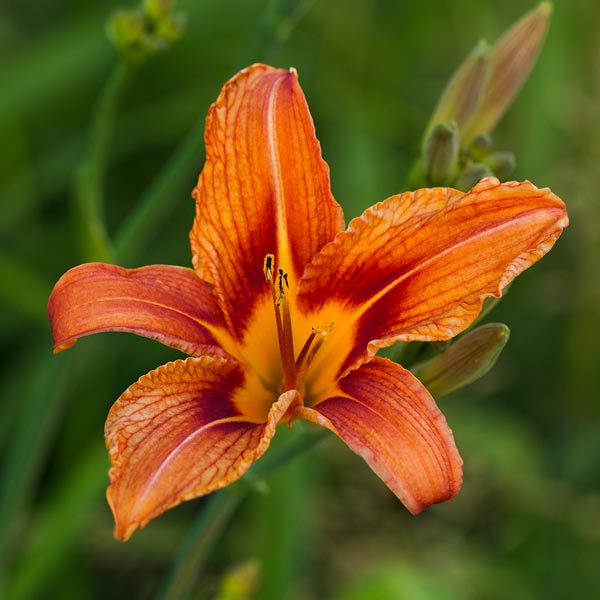
Day Lily
Hemerocallis ssp.
Perennial
Height: 2.5–3.5′
Exposure: Full Sun/ Partial Shade
Bloom: Summer
Purple, yellow, orange flowers

False Indigo
Baptisia australis
Perennial
Height: 3–4′
Exposure: Full/ Partial Sun
Bloom: Spring/Summer
Blue-violet flowers, nitrogen fixer, deer resistant
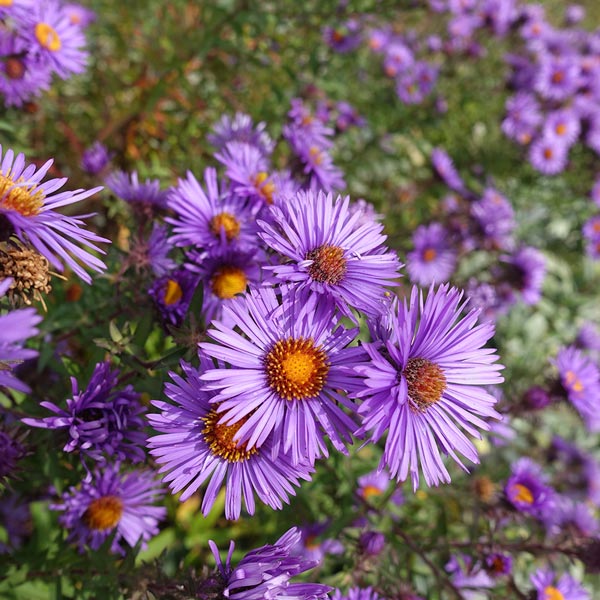
New England Aster
Aster novae-angliae
Perennial
Height: 2–6′
Exposure: Full Sun/ Partial Shade
Bloom: Summer/Fall
Pink-purple flowers
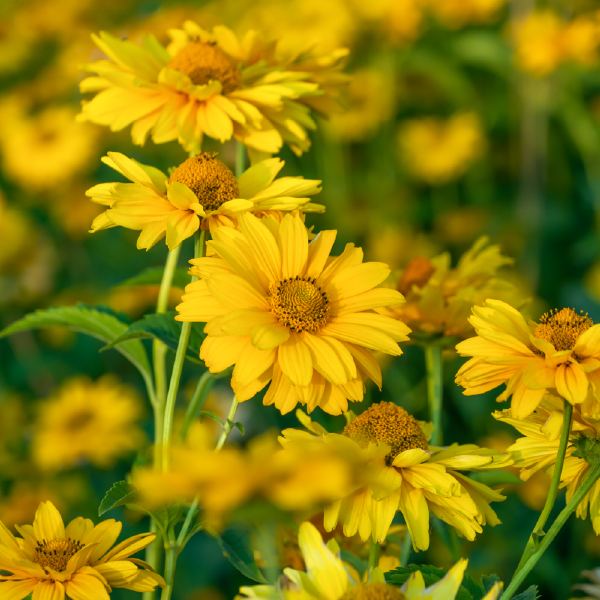
Oxeye Sunflower
Heliopsis helianthoides
Perennial
Height: 2–3′
Exposure: Full Sun/ Partial Shade
Bloom: Spring/Fall
Yellow flowers, attracts ground bees, butterflies, and birds
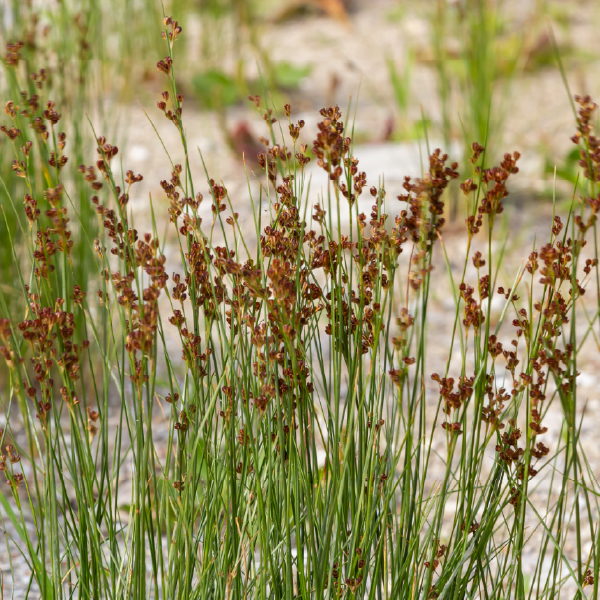
Soft Rush
Juncus effusus
Grass
Height: 3′
Exposure: Full/ Partial Sun
Bloom: Spring/Summer/Fall
Small, non-showy yellowish cymes
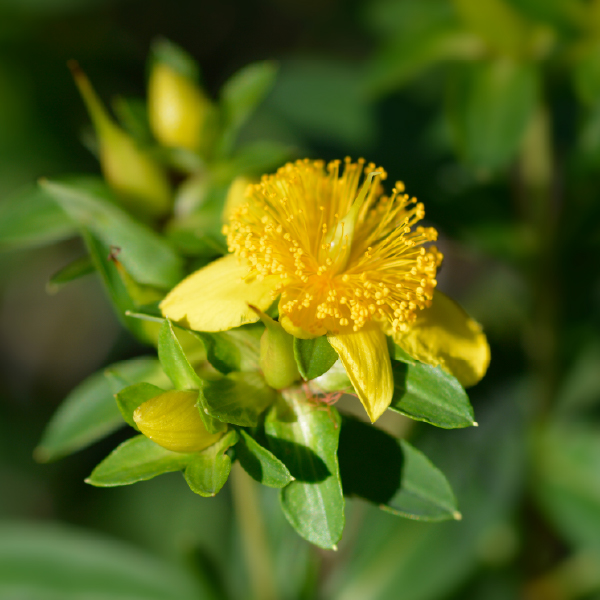
St. John’s Wort
Hypericum kalmianum
Perennial
Height: 2–3′
Exposure: Full/Partial Sun
Bloom: Summer
Yellow star-shaped flowers, deer resistant
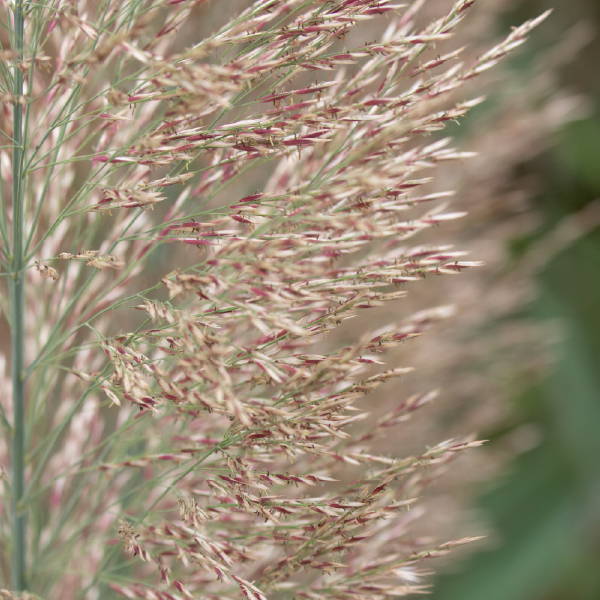
Tall Switchgrass
Panicum virgatum
Grass
Height: 3–6′
Exposure: Full/Partial Sun
Bloom: Spring/Summer/Fall
Quick growing, spring wildlife cover
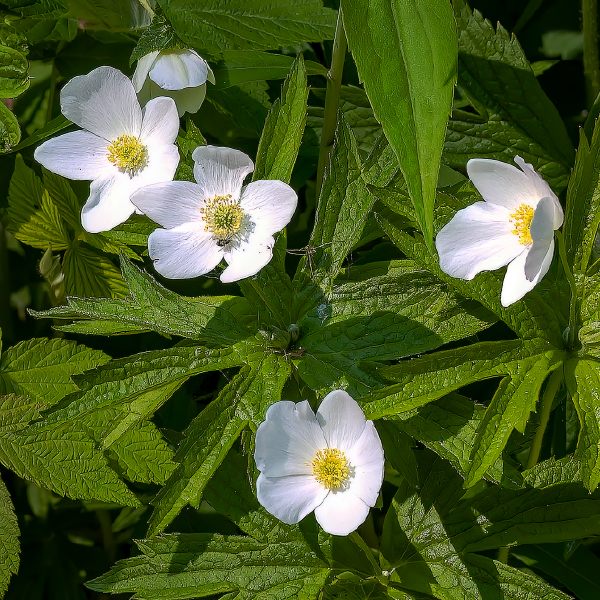
Windflower
Anemone canadensis
Perennial
Height: 1–2′
Exposure: Partial Shade
Bloom: Spring
Pure white flowers
Salt-intolerant
These plants are not salt-tolerant, so you want to avoid placing them in areas away from where you salt in the winter.
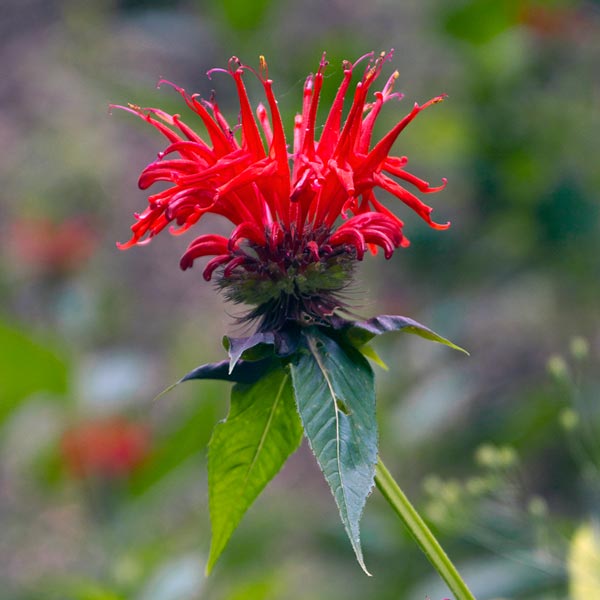
Bee Balm
Monarda didyma
Perennial
Height: 3′
Exposure: Full Sun/ Partial Shade
Bloom: Summer
Red, pink, salmon colored flowers, aggressive

Big Bluestem
Andropogon gerardii
Grass
Height: 3–7′
Exposure: Full Sun
Bloom: Fall
Purple, good for erosion prevention due to large root system

Bloodroot
Sanguinaria canadensis
Perennial
Height: 6–10″
Exposure: Full/Partial Shade
Bloom: Spring
White flower, toxic
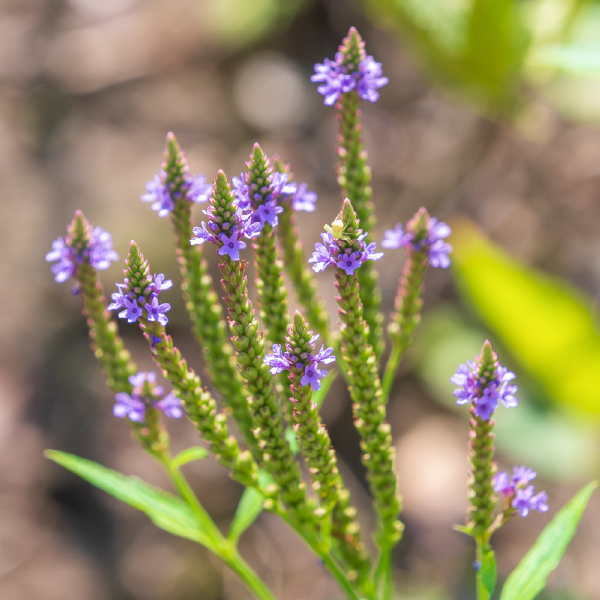
Blue Vervain
Verbena hastata
Perennial
Height: 2–4′
Exposure: Full Sun/ Partial Shade
Bloom: Summer/Fall
Purple spires
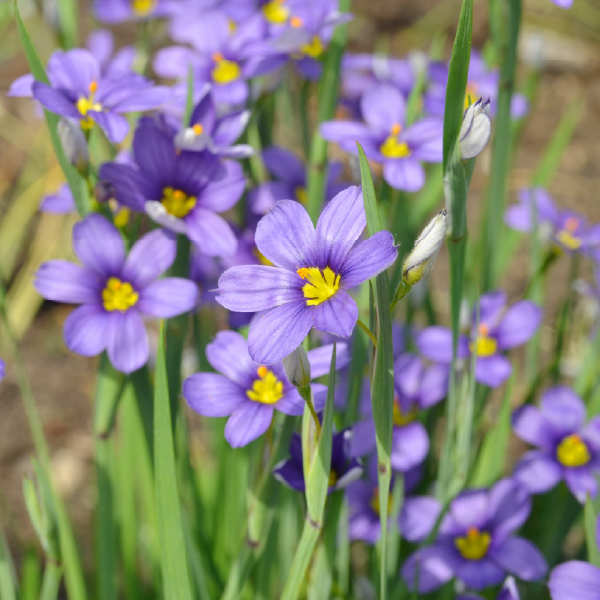
Blue-Eyed Grass
Sisyrinchium angustifolium
Perennial
Height: 8–10″
Exposure: Full Sun
Bloom: Summer
Small blue or purple flowers, self-seeds

Boneset
Eupatorium perfoliatum
Perennial
Height: 4–6′
Exposure: Full Sun/ Partial Shade
Bloom: Summer
Flat-topped clusters of small, fluffy, white flowers
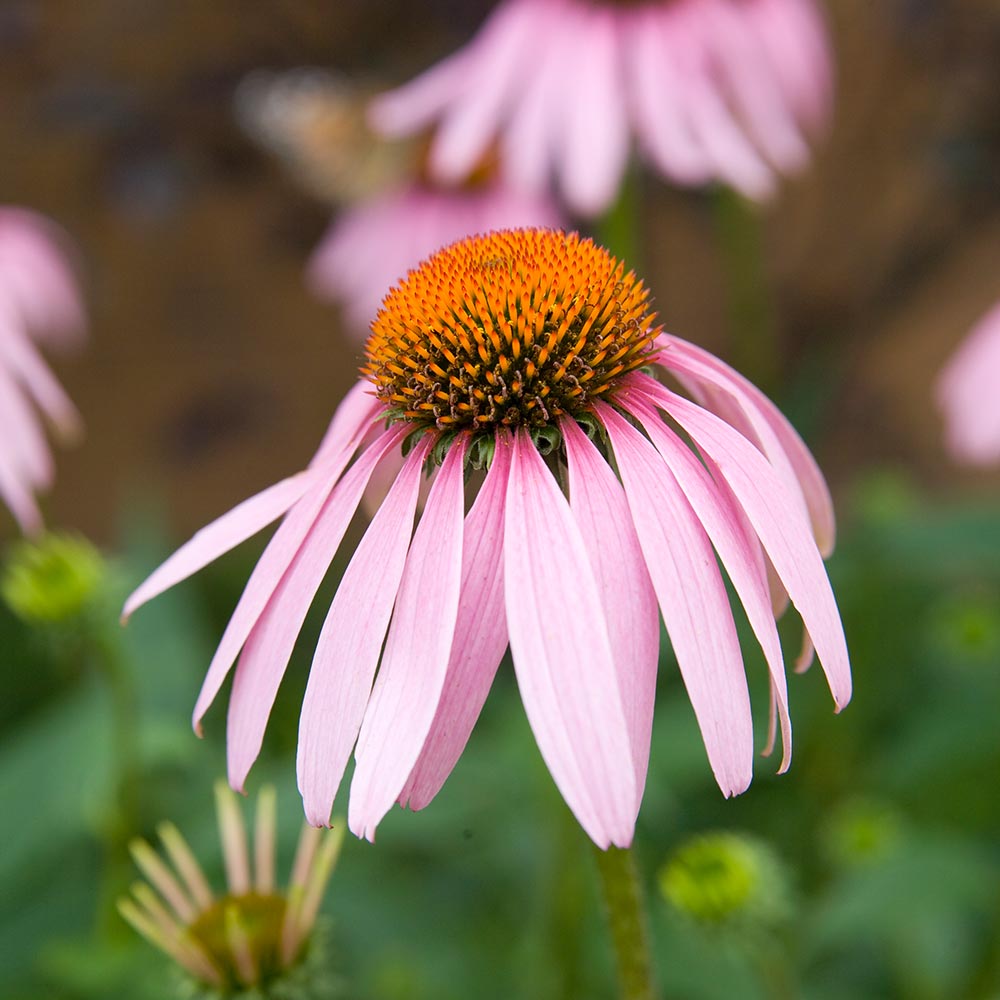
Coneflower
Echinacea purpurea spp.
Perennial
Height: 1–2′
Exposure: Full Sun/ Partial Shade
Bloom: Summer
Varieties include purple and white flowers
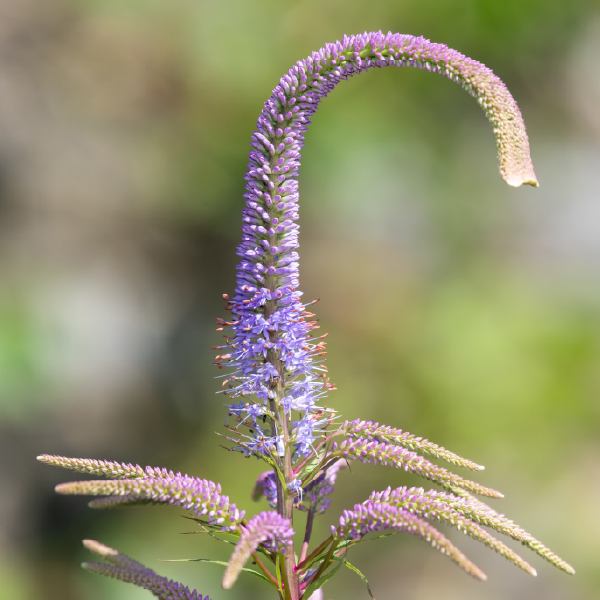
Culver’s Root
Veronicastrum virginicum
Perennial
Height: 4–5′
Exposure: Full Sun/ Partial Shade
Bloom: Summer
Lavender or white spiked flowers, attracts bees and butterflies
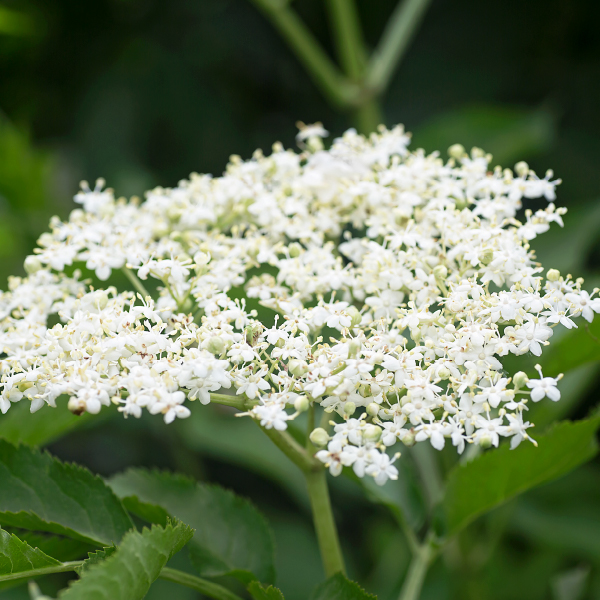
Elderflower
Sambucus canadensis
Shrub
Height: 5–12′
Exposure: Full/Partial Sun
Bloom: Summer
White flowers, prefers moist soils, can tolerate wet and clay soils
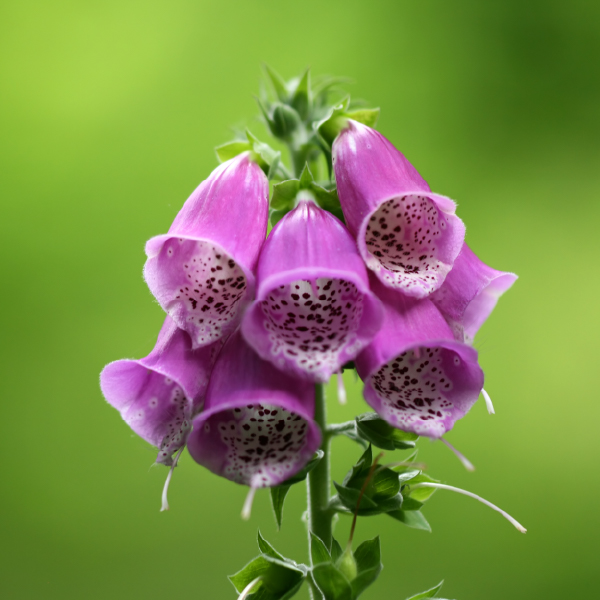
Foxglove
Penstemon digitalis
Perennial
Height: 3–5′
Exposure: Full Sun
Bloom: Spring/Summer
Purple flowers, deer resistant, clay/dry soil tolerant
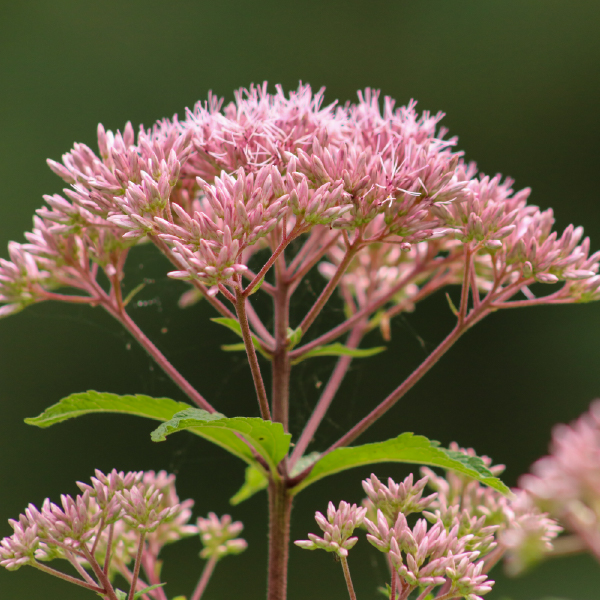
Joe-Pye Weed
Eutrochium maculatum
Perennial
Height: 4–6′
Exposure: Full Sun
Bloom: Summer/Fall
Pink flowers, deer resistant, tolerates clay soils
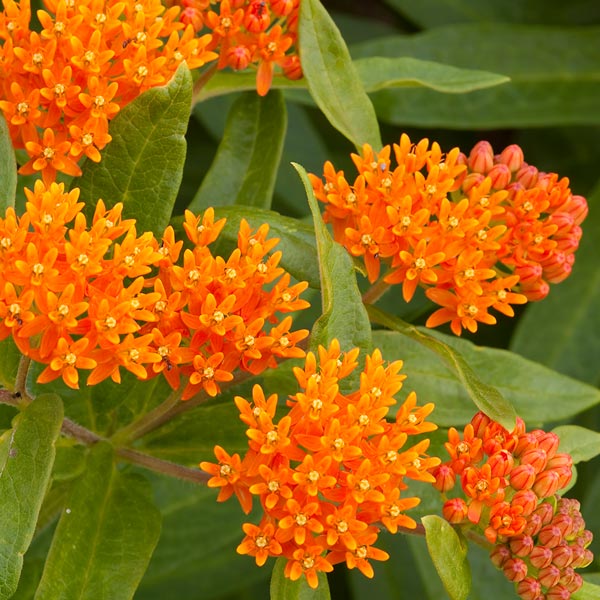
Milkweed
Asclepias tuberosa
Perennial
Height: 1–2.5′
Exposure: Full Sun
Bloom: Summer
Orange flower
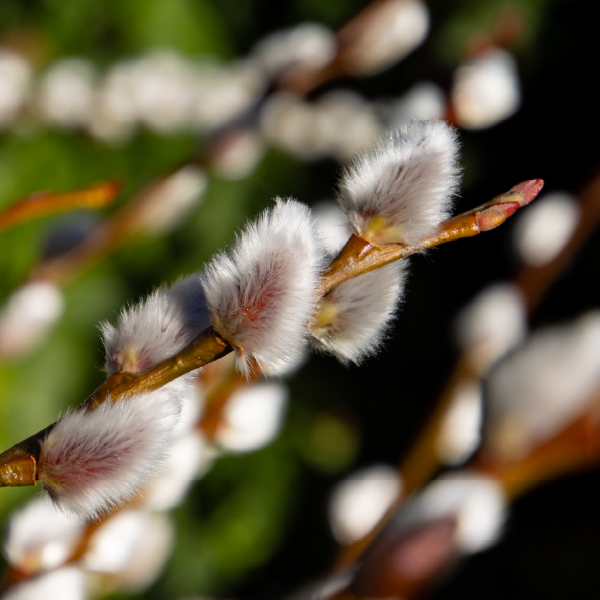
Pussy Willow
Salix discolor
Shrubs
Height: 6-15′
Exposure: Full Shade
Bloom: Winter/Spring
White flowers, silky grey catkins, fast growth
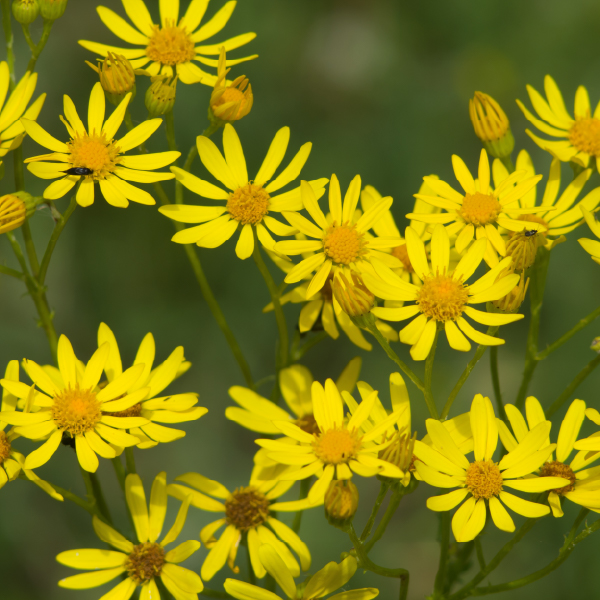
Senecio
Packera aurea
Perennial
Height: 6–30″
Exposure: Full/Partial Sun
Bloom: Spring
Yellow, daisy-like flowers
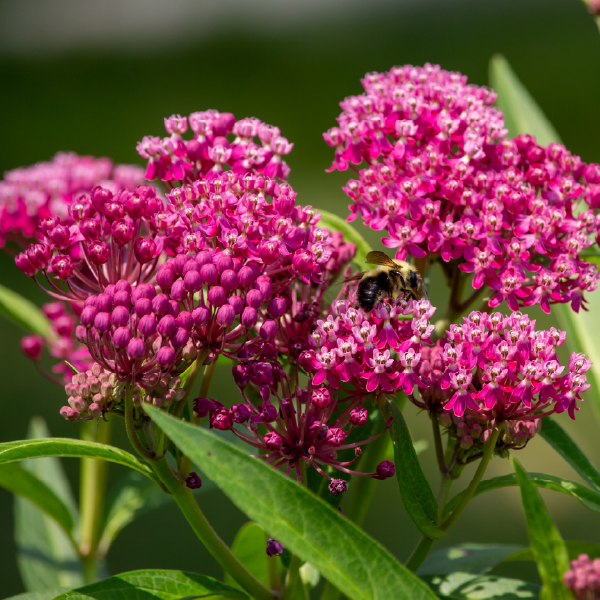
Swamp Milkweed
Asclepias incarnata
Perennial
Height: 4–5′
Exposure: Full Sun
Bloom: Spring/Summer/Fall
Showy, small, rose-purple flowers, attracts Monarch butterfly
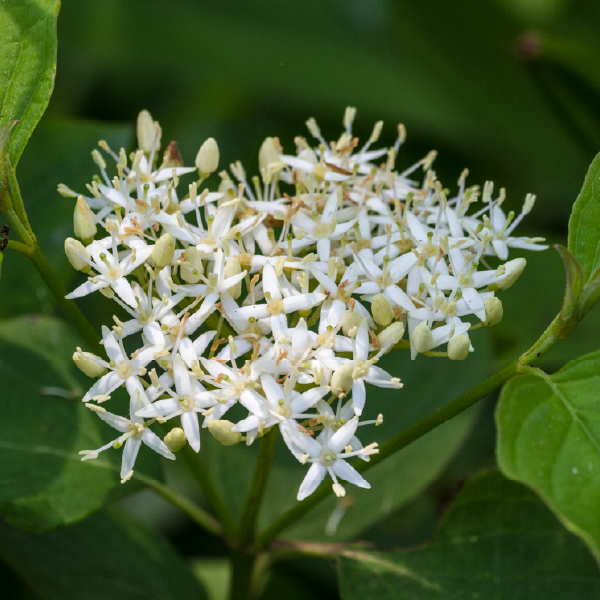
Red Osier Dogwood
Cornus sericea
Shrub
Height: 6–12′
Exposure: Full Sun
Bloom: Spring/Summer
White flowers, red stems in winter, provides food and cover
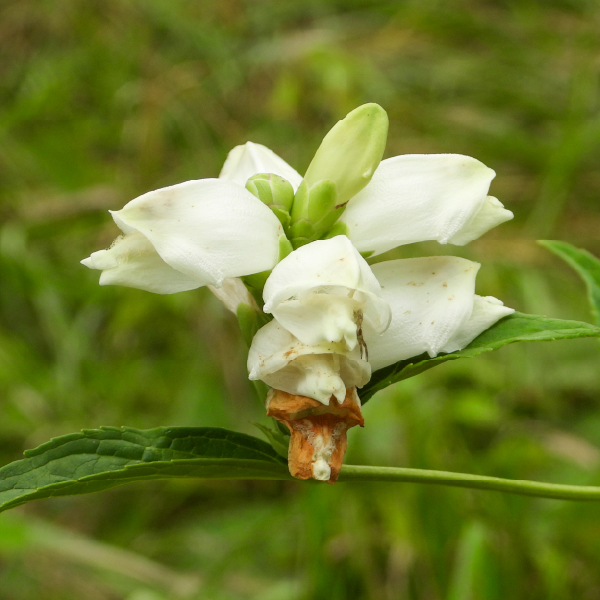
Turtlehead
Chelone glabra
Perennial
Height: 2–3′
Exposure: Full/Partial Sun
Bloom: Summer/Fall
White flowers, attracts butterflies
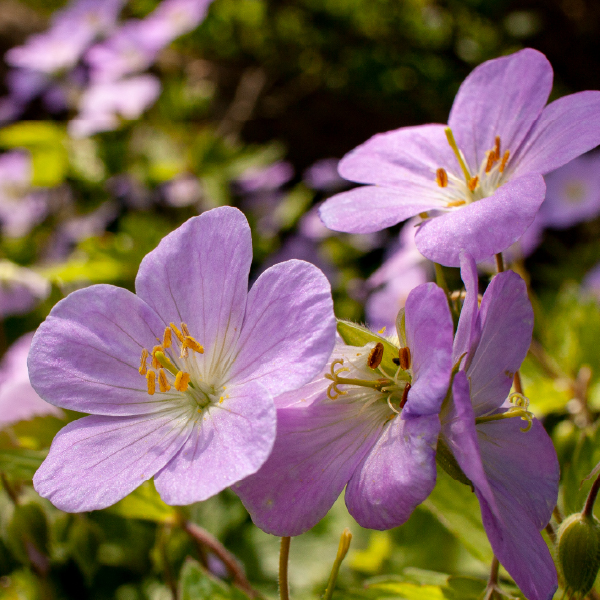
Wild Geranium
Geranium maculatum
Perennial
Height: 1–2′
Exposure: Full/Partial Sun
Bloom: Spring/Summer
Pink flowers, deer resistant
Are You Interested in Learning More about Rain Gardens?
Helpful Tips for Building a Rain Garden
- Choose the placement, shape, and impervious surface that will drain into the garden before you start digging. A rain garden will help reduce stormwater in an area up to 5 times its size.
- Make sure the garden depth is even throughout the bed. The garden should have gradually sloped sides.
- Uphill and downhill edges of the rain garden should be the same height. To do this, create a berm on the downhill side with soil or the sod dug out of the garden. Measure the height all across the down and uphill edges to ensure even height. This can be done with a string line level and measuring tape. Stake string at the high point of the garden and measure across to different areas of the berm.
- Use soil with high sand and low clay content. This increases the water retention capacity and increases drainage time. Soil can be amended. Compost should be added to help give plants a boost and enhance water retention.
- Try not to walk in the garden as much as possible. This will keep the soils airy and not compact. After planting, make sure to water and mulch the garden thoroughly. Line the entrance of the garden with pebbles and stones to protect it from erosion.
The plants need to be hearty and able to handle short periods of inundation after rain. Use of native and taller plants are preferable because of the pooling of the rain water.
Most of the time, soil will be well drained and dry. Look for plants that prefer moist or well drained soils.
